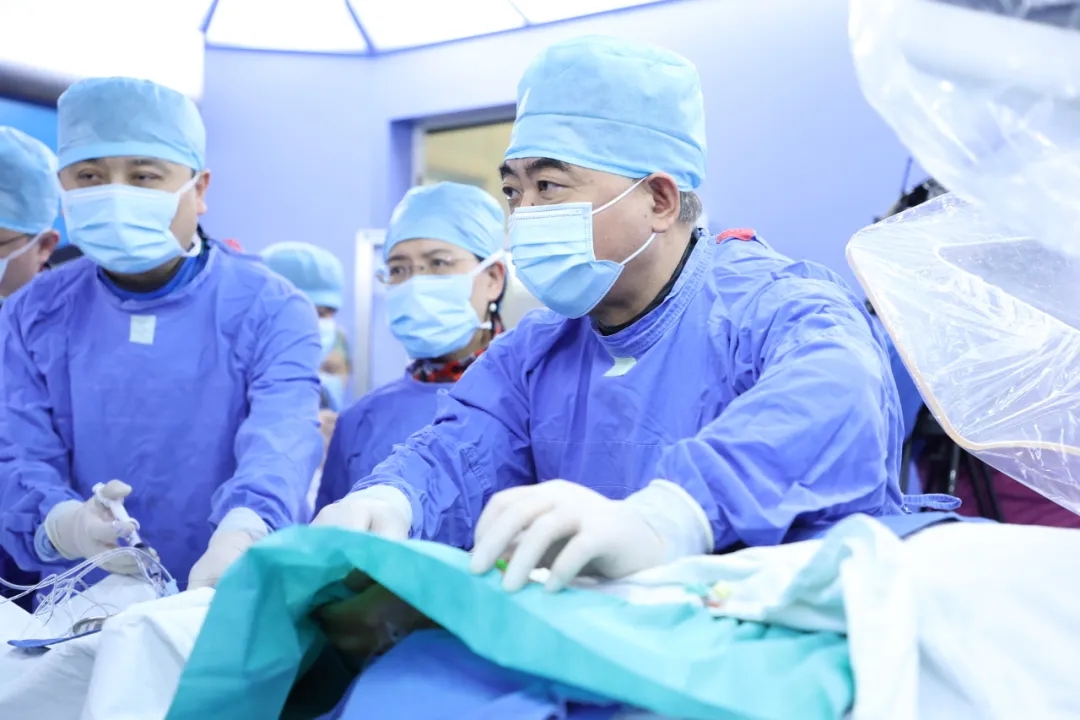The world’s first “zero-noise” DSA was successfully performed at Zhongshan Hospital
Professor Ge Junbo, the director of the Cardiology Department at Zhongshan Hospital, Fudan University, served as the lead surgeon for this groundbreaking procedure. The patient was a 59-year-old male, 175 cm tall, weighing 84 kg, with a BMI of 27.4, placing him in the overweight category. Preoperative evaluations revealed multiple severe stenoses in his coronary arteries. Given the complexity of his coronary artery disease, the patient urgently required high-precision interventional treatment. The “zero-noise” DSA used in this procedure not only clearly imaged the patient’s small blood vessels and complex lesions in the coronary arteries but also greatly reduced radiation exposure during the surgery.
。

"'Zero-noise' technology is a major breakthrough in the field of vascular intervention. It not only significantly improves image clarity but also reduces radiation risks for both patients and healthcare providers to an unprecedented low." Professor Ge Junbo, in an interview after the surgery, told reporters that this technology addresses the long-standing clinical dilemma of balancing “image clarity with radiation dose.” In the past, achieving high image clarity required increasing the radiation dose, while reducing radiation necessitated a trade-off in image quality. Now, this dilemma has been overcome, providing a new tool for precise treatment of complex lesions.
Industry experts explain that the term “zero-noise” in DSA does not refer to sound, as commonly understood, but to the clarity of the images. This is a major technological breakthrough in the field of medical imaging. Specifically, "zero-noise" DSA optimizes the imaging system, virtually eliminating the interference noise from images, resulting in a 57% improvement in image resolution, a minimum 57% improvement in spatial resolution, and a signal-to-noise ratio increase of more than four times.
“It’s like watching TV at home and suddenly seeing snow-like noise on the screen, which greatly impacts image clarity. If you switch to an HD channel, the noise disappears. 'Zero-noise' DSA is like that HD channel—it removes the 'noise' from the images, allowing doctors to more accurately identify target lesions during complex vascular interventional procedures.” Experts analyze that the advent of "zero-noise" DSA is akin to a “high-definition revolution” in medical imaging, significantly improving image clarity during clinical surgeries while reducing radiation doses. This helps doctors gain more critical information during complex procedures, providing safer and more effective treatment options for patients.
Professor Ge Junbo explains that in past heart intervention surgeries, especially those involving complex chronic total occlusion (CTO) lesions, both doctors and patients were at risk of excessive radiation exposure. These surgeries are typically long, lasting 2 to 4 hours, and the X-ray radiation during the procedure is unavoidable.
For doctors, prolonged exposure to scattered radiation increases health risks, including hair loss, radiation-induced skin damage, and even potential cancer risks. At the same time, patients are direct victims of radiation exposure, especially those who undergo multiple checks or procedures over an extended period.
Through innovative technology, “zero-noise” DSA effectively reduces radiation doses by over 70%. This means that with the same image quality, patients can have a much better medical experience, reducing adverse reactions and complications post-surgery, and increasing the overall safety of each procedure. Additionally, reducing the accumulation of radiation exposure can significantly lower radiation-related health risks in the long term, providing patients with more sustainable medical protection.
Of course, the "high-definition images" also enable doctors to achieve more precise guidewire positioning and advancement, improving surgical success rates and reducing patients' surgery time.
“In the future, through collaboration among industry, academia, research, and healthcare, we will further promote precise diagnosis and treatment of cardiovascular diseases, allowing more patients to enjoy high-quality healthcare services at lower costs.” Professor Ge Junbo said.
- End -
医谱app
扫码或者点击图片下载
微信公众号
扫码或点击图片关注
版权及免责声明:
本网站所发表内容知识产权归属医谱平台、主办方以及原作者等相关权利人,未经许可,禁止进行复制、传播、展示、镜像、上载、下载、转载、摘编等。经授权使用,须注明来源,否则将追究其法律责任。有关作品内容、版权和其他问题请与本网联系。



发表留言
暂无留言
输入您的留言参与专家互动